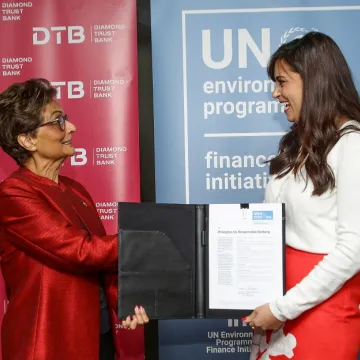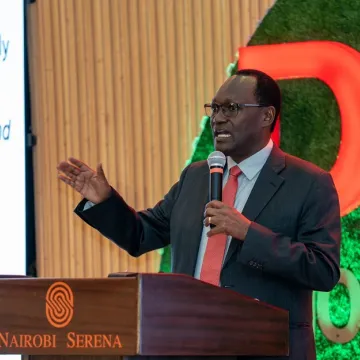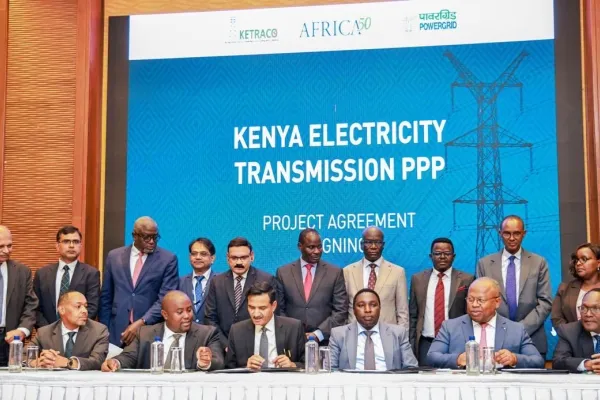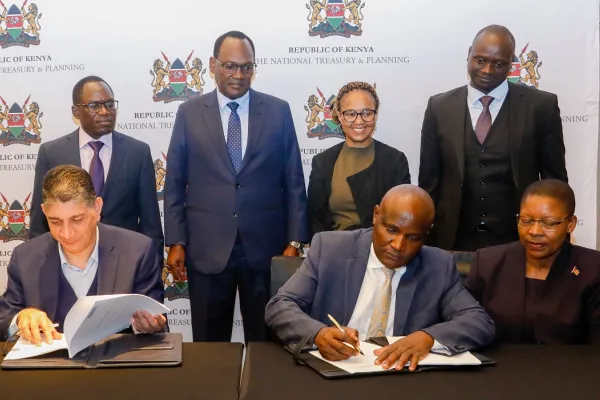DTB sees surge in SME lending as interest rates ease
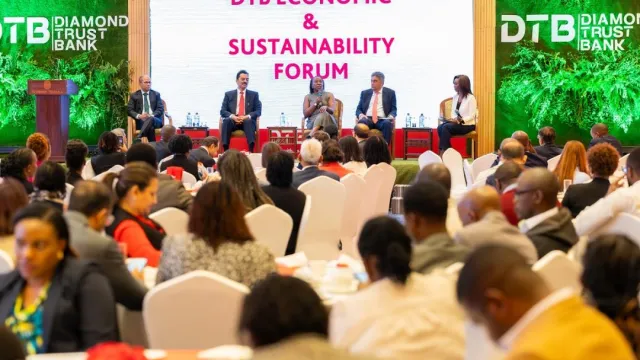
A panel discussion during the DTB’s Economic and Sustainability Forum held on Wednesday, 15 October 2025.
Lending to small and medium-sized business is on the increase from the improved economic environment over the past 12 months, Diamond Trust Bank Kenya’s chief executive Murali Natarajan has said.
Mr Natarajan hailed the efforts by the Government and the Central Bank of Kenya in stabilizing the shilling, reducing interest rates and enabling the reduction of inflation, which are bound to affect the business sector.
“I think the Government and the Central Bank of Kenya have done a fantastic job from what was in the middle of last year and what we have today. There has been a transformative change in terms of interest rates coming down. Deposit rates are coming down, loan rates have come down and based on the data that I have seen on credit off-take, from negative three four months ago, credit off-take has moved into positive territory, which is very good for us,” said Mr Natarajan at DTB’s Economic and Sustainability Forum.
With interest rates falling, he said, lending to small and medium enterprises is bound to increase and the effect is already being felt within the bank.
“DTB is focused on business banking, which is SME and micro-SMEs. While we are contributing to be strong on corporate landing, in the last 12 months, we have shifted gears in business banking and retail and we are expanding our team. Overall, we are confident that barring any unforeseen situation, we should be able to double our balance sheet in between three to four years,” said Mr Natarajan.
He added: “The banking sector supports businesses which have good ideas and are reasonably well managed. So if the ideas come and you find there is reasonable experience of the promoters, there is a good chance of succeeding, I don’t see how banks won’t support.”
At the forum, Trade and Industry Cabinet Secretary Lee Kinyanjui challenged banks to play a bigger role in supporting Kenya’s economic growth. With the Africa Continental Free Trade Area, he said, Kenya can use its strong manufacturing base to export goods to a potential 1.4 billion people across the continent.
“In the past, we have been very good at helping nations during their liberations, but when they get their independence, we don’t move as fast to reap the economic benefits. Kenya has been in the forefront in the AfCFTA conversation, but the real move will come from the business people,” said Mr Kinyanjui.
The CS said with Kenya now heading COMESA, banks have a big role to play in enabling businesses to reach markets within the continent.
“Sometimes, when we get these bilaterals with some of the diplomats, they come to us and tell whatever they want to send in to Kenya. They ask me, ‘What can you sell? What do you want to export to our country?’ After I say coffee, tea and flowers, the rest I’m not too sure what to say, in volumes,” said Mr Kinyanjui.
He added: “If there is one area where can unlock this country, it is the area of financing for growth. With tourism, the level we are playing at is not where we belong. In exports, we may be the biggest in the region but do we want to compare ourselves with the region or would we want to play in the higher level?
The risk brought about by political brinkmanship, which often spills over into the streets, has been Kenya’s undoing, he said, with the work done by political leaders to cool the temperatures helping.
“If you remove the political risk, Kenya can play its rightful role. If we have the talent, the land, the weather, we have almost everything that we can imagine, except the political risk,” said Mr Kinyanjui.
Mr Natarajan on the other hand compared Kenya’s potential to that of Thailand, which has deliberately built up tourism even as its manufacturing and agricultural centers continue to develop.
“When I compare Thailand in terms of the landscape, the people and the culture, what is the advantage we have? Very service-oriented, nice English people, and we have a fair amount of infrastructure. There is lot of attractions – wildlife takes the centrestage but you see, we are not short of mountains and beaches,” he said.
“The question I have been asking myself for the past one year is: what can we do as a country to get, instead of three million visitors, 20, 30 million visitors? Could that make a big difference to our economy?” he posed.
He said with Kenya’s infrastructure and connection to the rest of the region, it could easily serve as the conduit for tourism to the rest of the East African region.
